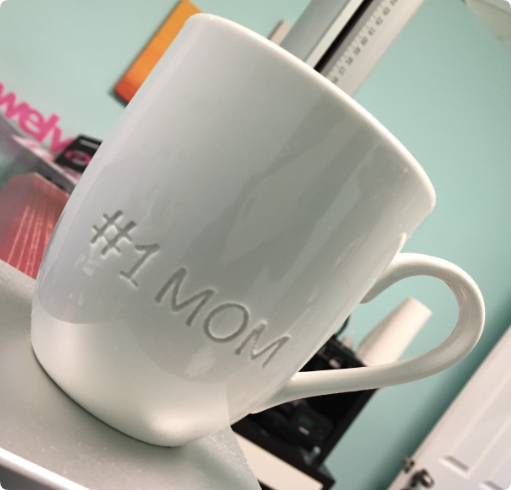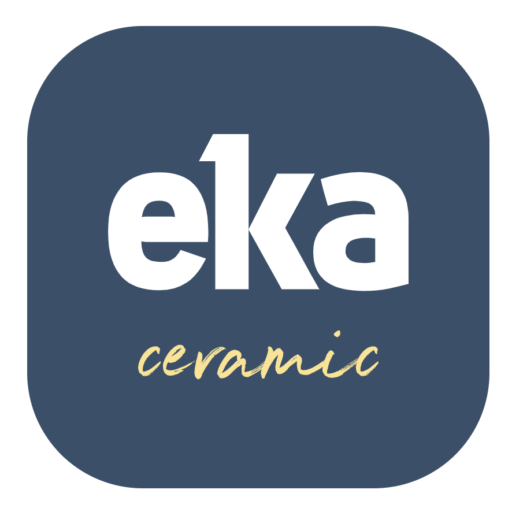When it comes to promotional items, corporate gifts, or custom retail products, ceramic mugs remain a top choice due to their durability, versatility, and ability to be personalized. Among the most popular customizations, engraving ceramic mugs stands out for its aesthetic appeal and the high-end feel it brings. However, for B2B buyers, engraving ceramic mugs presents a series of technical, design, and procurement considerations.
In this blog post, we will provide an in-depth analysis of whether ceramic mugs can be engraved, the different methods available, and how businesses can take advantage of this customization option for their corporate or retail needs. We will also present the pros and cons of engraving, compare it to other mug customization techniques, and offer tips on choosing the best ceramic mug manufacturers, such as EKA Ceramic, for large-scale orders.
1. Introduction to Engraving Ceramic Mugs
Engraving ceramic mugs is a popular choice among businesses and corporate clients who want to add a personalized touch to their products. Whether for company branding, promotional giveaways, or custom designs, engraving allows businesses to achieve a sophisticated and permanent customization. Unlike printed designs that may fade over time, engraving penetrates the surface of the ceramic, creating a design that is highly durable and resistant to wear.
For B2B buyers, particularly those in the hospitality, retail, or promotional industries, engraved mugs represent a premium product offering that can command higher price points and elevate brand image.
2. Methods of Engraving Ceramic Mugs
There are two primary methods for engraving ceramic mugs: laser engraving and sandblasting. Both methods offer distinct advantages depending on the type of design, the desired outcome, and the volume of mugs being customized.
Laser Engraving
Laser engraving is the most commonly used method for engraving ceramic mugs. It involves the use of a high-powered laser beam that precisely etches the design onto the surface of the mug. This method is favored for its accuracy, speed, and ability to create intricate designs.
- Advantages:
- Precision: Laser engraving can produce highly detailed and intricate patterns, making it ideal for logos, text, and even complex illustrations.
- Speed: The process is relatively fast, especially for large batches, making it cost-effective for B2B orders.
- Durability: The engraved design is resistant to fading and can withstand repeated washes, including in commercial dishwashers.
- Disadvantages:
- Limited Colors: Laser engraving is typically monochrome, meaning it cannot replicate colored designs. It works best for subtle or minimalist designs.
- Material Sensitivity: Some ceramic coatings may react differently to laser engraving, potentially leading to slight discoloration.
Sandblasting
Sandblasting is another popular technique for engraving ceramic mugs. It involves using a high-pressure stream of abrasive material (usually sand) to carve the design into the surface of the mug. This method is highly effective for creating deep, textured engravings.
- Advantages:
- Depth: Sandblasting allows for deeper engravings, which can create a more textured and tactile design.
- Versatility: It can be used on various shapes and surfaces, making it ideal for mugs with unusual forms.
- Elegant Finish: The resulting engraving is smooth and consistent, giving the mug a high-end look.
- Disadvantages:
- Longer Process: Sandblasting is typically slower than laser engraving, making it less suitable for large orders.
- Higher Cost: The equipment and labor involved in sandblasting can result in higher production costs compared to laser engraving.
3. Pros and Cons of Engraving Ceramic Mugs
For businesses considering engraved ceramic mugs, understanding the advantages and limitations of this customization method is crucial. Below is a table that compares engraving with traditional printing methods such as screen printing or sublimation.
Engraving vs printing Ceramic Mugs
| Feature | Engraving (Laser/Sandblasting) | Printing (Screen, Sublimation) |
|---|---|---|
| Durability | Permanent, resistant to fading | Can fade over time with washing |
| Detail | High precision, suitable for intricate designs | Can produce colorful and complex images |
| Color Options | Monochrome (engraving only) | Full-color designs available |
| Texture | Creates a textured surface (sandblasting) | Smooth, no texture |
| Cost (per unit) | Higher due to labor and equipment | Generally lower for large-scale orders |
| Production Time | Fast for laser engraving, slower for sandblasting | Typically faster, especially for large orders |
| Application | Best for logos, minimalistic designs | Best for vibrant, colorful designs |
4. Key Considerations for B2B Buyers
When purchasing ceramic mugs for engraving, B2B buyers should take into account several important factors:
Volume
Large orders are more cost-effective for engraving, particularly with laser engraving. B2B purchasers should ensure their supplier can handle bulk orders efficiently without compromising quality.
Design Complexity
While engraving is ideal for minimalist or detailed designs, it may not be suitable for logos or images requiring multiple colors. Buyers should consult with their supplier to determine the best approach for their specific design.
Mug Material and Finish
Not all ceramic mugs are suitable for engraving, especially those with certain coatings or finishes. Matte or raw ceramic surfaces tend to work best for engraving. Buyers should choose mugs that are specifically designed for engraving to avoid issues such as discoloration or surface damage.
Turnaround Time
For B2B buyers with tight deadlines, laser engraving is typically faster than sandblasting. However, the complexity of the design and the volume of the order will affect turnaround times. Buyers should clarify production times with their supplier before placing large orders.
5. Choosing the Right Ceramic Mug for Engraving
The choice of the ceramic mug is crucial when considering engraving. Different types of ceramic mugs respond differently to engraving processes, and certain shapes or finishes may limit the customization options.
Some popular types of ceramic mugs for engraving include:
- Matte Finish Mugs: Matte surfaces tend to respond well to engraving, providing a high contrast between the design and the mug surface.
- Stoneware Mugs: These mugs often have a textured surface that enhances the engraved design, particularly when using sandblasting.
- Porcelain Mugs: Though more delicate, porcelain mugs can also be engraved, especially for high-end or luxury product lines.
At EKA Ceramic, we offer a wide range of ceramic mugs that are specifically designed for customization, ensuring that B2B purchasers can find the right product for their needs. Our team can assist in recommending the best mugs for engraving and provide samples to ensure the final product meets your expectations.
How to Printing Ceramic Mugs
@ekaceramic2014 🍵Oem order! ☕️Ceramic mug logo design printing !#ceramicmug #mugdesign #ceramiccup #customizedgifts #ceramicfactory
♬ original sound – ekaceramic
How to Laser Engrave Ceramic Mugs
6. Why EKA Ceramic is the Best Choice for B2B Purchasers
When it comes to purchasing engraved ceramic mugs, partnering with a reliable and experienced manufacturer is essential. At EKA Ceramic, we specialize in producing high-quality ceramic products tailored to the needs of B2B buyers.
Our services include:
- Large-Scale Production: We are equipped to handle orders of all sizes, from small batches for niche markets to large-scale orders for major corporations.
- Customization Options: In addition to engraving, we offer a wide range of customization options, including printing, decal application, and color matching, to ensure your mugs perfectly represent your brand.
- Quality Control: Each mug undergoes rigorous quality checks to ensure the engraving is precise and the final product is flawless.
- Competitive Pricing: Despite the high-quality output, we offer competitive pricing for bulk orders, making us the ideal choice for B2B buyers looking for value without compromising quality.
7. Conclusion
Ceramic mugs can indeed be engraved, and for businesses looking to create unique, long-lasting custom products, this is an excellent option. Whether through laser engraving for precise and quick designs or sandblasting for deep, textured engravings, the choice will depend on the design requirements, budget, and production timeline.
For B2B buyers, EKA Ceramic offers the perfect combination of expertise, quality, and scalability. From choosing the right mugs to delivering fully engraved products, we are committed to helping businesses create memorable, high-quality products that leave a lasting impression.
If you’re ready to place an order or want to learn more about our ceramic engraving options, feel free to contact us at EKA Ceramic today!




